By: debbie lynn elias
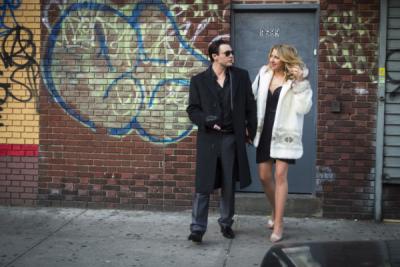
Thomas “Tommy” Uva lived a life of crime. Petty stuff committed in Queens, New York during a time when the City was ruled by the Gambino and Bonanno crime families. And although small potatoes in comparison to the mafia, they were crimes nonetheless and crimes that garnered Tommy his fair share of time behind bars. His girlfriend and love of his life, Rosemarie “Rosie”, also had a few brushes with the law thanks to drugs and alcohol. After Tommy’s last prison release in May 1992, despite his best intentions to go straight and find a life of marital bliss with Rosie, the job market was bad – especially for an unskilled ex-con – and the couple needed money to live. And so at the ripe old age of 28, he hit upon a seemingly fail-safe plan – hold-up the mafia social clubs scattered throughout the boroughs of New York City, clubs owned by the Gambinos and Bonannos. Club members were primarily aging old guys playing cards and telling stories of days gone by. The couple’s MO was well documented by witnesses: Rosie would take the wheel of the getaway car while Tommy, armed with an Uzi submachine gun, would strop the patrons and club employees of their money and jewelry while making the men strip down and drop their pants. Guns were rarely found on the premises as these were “legit” clubs. And being mob-owned, if the clubs were robbed, what would they do? Call the cops?
Tommy and Rosie embarked on a modern day crime spree a la Bonnie and Clyde, a crime spree that was splattered all over the national news for months as one of the more tongue-in-cheek lifestyle stories instead of making the crime beat. After all, it is rather amusing that someone could actually “ROB THE MOB”. Unfortunately, the Gambinos and Bonannos didn’t see the humor in the situation and put out an “open contract” on Tommy and Rosie.
On Christmas Eve 1992, Tommy and Rosie were gunned down by a Gambino family capo.
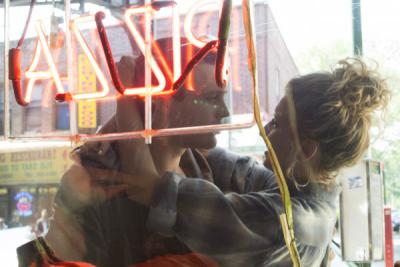
ROB THE MOB is their story. One of the most sensational stories to come from the underbelly of the mafia. One that took decades to be told until stumbled upon by screenwriter Jonathan Fernandez. “I had heard the story in the early ‘90s, and then, over a decade later, there was a trial for the people who were convicted ultimately of the murder of Thomas and Rosemary. And so, like Michael Pitt’s character [Tommy Uva], I really did go to the courthouse and I really did sit with the journalists, and there really were the Mafia families watching. I really did go to the Mafia social clubs.” And that’s when the lightbulb went on as Fernandez thought, “Wow, this is something different. We’ve never seen the Mafia in decline. We’ve never seen that.”
Myself always partial to true life mob and crime stories, ROB THE MOB is outstanding. While literary license is taken with some of the facts that came to light during the subsequent trial for the murder of the Uvas, the basic facts and people involved remain the same, with a few exceptions, namely that of mob patriarch “Big Al”. Recalling that he “spitballed” some ideas with screenwriter Fernandez and director Raymond DeFelitta, actor/producer Andy Garcia is quick to give credit to the collaborative effort in creating his character, Big Al. “We developed this concept with everybody’s ideas of who this guy could be in the story. One of the things I remember suggesting was to change his name, because the real guy is the real guy and now we’re creating a guy, so just let it be an inspiration on these guys.” Beyond changing the name of the Don, DeFelitta “wanted to do something that was a departure, and we were more interested in him as a cook and as a grandfather than we were as a mob boss. That was what he did, but how did he get there? I think the original character did have a food truck and that’s how he started and he got involved in the mob. Jonathan did more research than I did because he was the original writer. . .We started building this arc for this character and that’s always the beauty of the collaboration.” The result is a grounded, kind, dignified performance in which the quiet nature Garcia brings to the character is more telling and compelling than if Big Al was a “go big or go home” over the top Edward G. Robinson kind of gangster. Focusing on food and family, scenes between Big Al as a grandfather with his grandson are pure love, guaranteed to resonate with all. And by the very nature of Garcia’s performance, when he explodes in a rage, we are taken aback in shock.
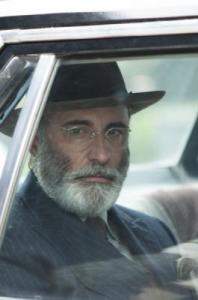
Finding a new way to show not only Big Al, but the mob as a whole, proved challenging to DeFelitta. “I don’t think that it’s a good idea for any director to decide to go make a mob movie. It’s been done. You’re not going to top Goodfellas. You’re not going to top The Sopranos. . . You have to find some other wrinkle. So, when I read Jonathan’s screenplay, I saw this is the mob as a bunch of victims. It’s like they’re these worn out guys and they don’t know how to deal with this strange kid with an Uzi. Every choice we started to make from that point on was based on what have you not seen in a mob movie. What makes this different? And then, when we started talking with Andy about the role, it was, ‘Who’s the mob boss you haven’t met?’ The idea that ultimately we got to was the foodie grandpa mob boss who actually makes a fatal error early on, letting the death of his own son affect his not ordering the hit on the two when he should. It made his story encompass all of the big things we wanted to do in the movie as well, which was just tell you a mob story that really wasn’t one that hopefully you had seen before.”
For Garcia, the backstory was all important to the present day story and character of Big Al. “It was a tragic arc and it was beautiful because he got involved in it by chance. There’s a courier and [Big Al] starts making money and he buys his boy a bike. . .Just because of who he is, he grows within the hierarchy of that organization, and it gets to a point where because he’s such a powerful guy, and his son by his very nature gets sucked into it with him, he has to pay for it with the price of his own son, the death of his own son. He gets involved to protect and provide for his family. . .That choice was a very powerful thing and now he’s left with his grandson. All he wants to do is spend time with his grandson and cook for him and not deal with the mob, but he’s still the head of the mob. Those were all complications that we were trying to get to.”
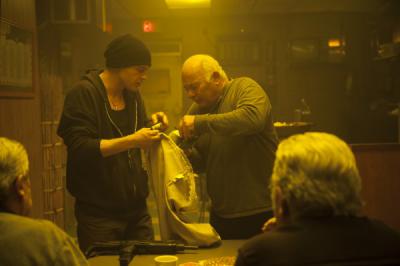
Michael Pitt blew me away with his portrayal of Tommy Uva. Chameleonic, immersive, driving, electrifying. He sizzles. He commands the screen as Tommy giving him an at times exuberant innocence that is driven by bravura and fear. Rapier balancing act of emotion. And feeding off Pitt but then creating her own dynamic electricity is Nina Arianda. If her performance as Rosie doesn’t put her on the map of every casting agent out there, nothing will. She leaps of the screen with life and vibrancy fueled by blind faith and love.
Stacking the deck in his favor with some iconic casting, DeFelitta packed his cast with “mob” veteran character actors like Michael Rispoli (always one of my faves), Burt Young, Aida Turturro, John Tormey, Garry Pastore and, of course, Cathy Moriarity. As DeFelitta notes, “When we were conceiving the look of the movie, it’s the look of the actors to me as well. It really became a little parlor game like, ‘Who from what iconic Italian-American movie or Italian-American mob movie could we get for everything? The meta-film of it is you’re looking at, ‘Here’s Burt Young. We’re in Once Upon a Time in America for a minute. Here’s Cathy Moriarty. You’re in Raging Bull for a minute. Here’s Andy and you’re in everything for a minute.’”
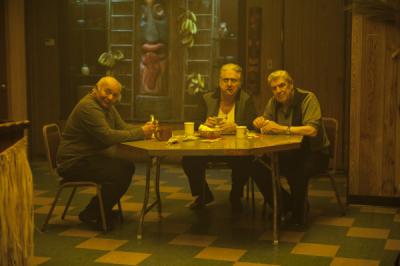
But then we have Ray Romano and Griffin Dunne. Dunne is a delicious dizzy delight as Dave Lovell, ex-con legitimate collection agency owner employer of Tommy and Rosie. Funny enough just as a boss, once Dave starts going to court with Tommy and Rosie to listen to a mafia trial, Dunne becomes an overly enthusiastic, smarmy and HYSTERICAL joy in the courtroom audience scenes.

On the other hand, Ray Romano is beyond believable as newspaperman Cardoza. While it harkens to Romano’s character as a sportswriter in Everybody Loves Raymond, as Cardoza, Romano adds the grit of the crime beat of the era to the character, giving him a relatable and “lived in” sensibility as the man who tells the story of Tommy and Uva in his newspaper column, revealing the wide-eyed wonder of the couple, particularly Rosie, who are more like kids taking glee in deying their parents than realizing the ramifications of robbing the mob. Serving as “the conscience of the movie and hopefully the audience’s conscience”, Cardoza is the vehicle in which the full story arc is revealed. It’s through Cardoza that not only is Tommy and Rosie’s story told but how it intersects with that of the mob and its players, and ultimately “what really becomes of this”, this ROB THE MOB story. As Cardoza, Romano brings to light the age old issue of what journalists face on a day-to-day basis: “Am I part of my story? I’m not supposed to be, but how can you not be sometimes and where’s that line that you cross?” Romano brings great gravitas to the role as well as resonating with our own curiosity as to how the story ends.
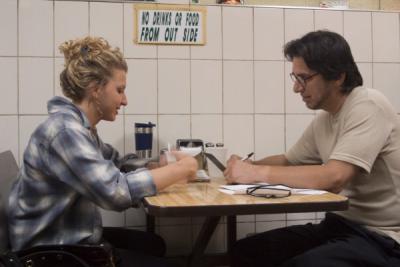
Beautifully executed is the cinematography of Chris Norr and DeFelitta. There is effective use of streaming sunlight that captures the little “fuzzies” of a sunbeam through a window when lensing the up and coming robbers, Rosie and Tommy, delivering a metaphoric sense that Rosie was not only warming up to the idea of crime but Tommy was warming up to Rosie. The dark woods and closed windows of the card clubs provide worn, weathered and shadowed textures thanks to some red tones through stained glass of just one window and then simple old school table lamps casting an incandescent glow on tables and bars. Big Al’s home is beautifully lit and lensed with not just a well apportioned and manicured home that showed taste and money but not too much money, but the transparency of image that Big Al was trying to reflect publicly as simple deli/restaurant owner. Clean, clear and crisp. There is a nice tonal balance reflected throughout the film that uses light and shadow to their best storytelling advantage.
The final scene of Tommy and Rosie getting married and their one idyllic day is a perfect stand alone sequence – slo-mo, saturated color, montage, tonal reds that explode at the perfect moment. Great contrast to the immediately preceding scene of a cold, grey steely day where the pallor of death hangs in the air as Cardoza tries to get them to take the tickets and money from him and leave. It’s not only visually memorable, but the emotional power of imagery and music with no dialogue fills the heart with palpable joy and sorrow.

Fernandez’ script has an authenticity and history to it that not only embraces the true crime on which it’s based, but is rooted in family and the importance of family – be it the Mafia or be it Tommy and Rosie starting out as a family. Fernandez never strays from the core and DeFelitta keeps his eye on the ball and focus on the story as opposed to what could have been a bang bang shoot ’em up Mafia flick. They stay true to the humanity of the people and the situations.
As opined by Andy Garcia, “We, as actors, are looking for those moments that become sublime experiences for us where you’re in the character and the character is speaking for himself.” Here, the actors and their performances eloquently speak for Tommy and Rosie Uva.
Directed by Raymond DeFelitta
Written by Jonathan Fernandez
Cast: Andy Garcia, Michael Pitt, Nina Arianda, Ray Romano











